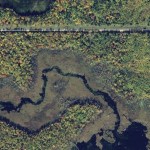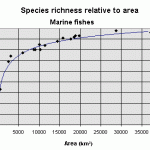nature conservation
I just put up a post in 10,000 Birds reporting on a recent study of duck stamp sales and duck hunting. There have been changes in recent years in the patterns of both waterfowl hunting and the purchase and use of federal duck stamps. Waterfowl hunters are required to have a duck stamp, and about 90% of the funds raised through the sale of these artistic quasi-philatic devices are used to secure wildlife preservation areas. For decades, duck population numbers and duck stamp sales were closely correlated, but recently this correlation has broken down. Read the post to find out the details and…
The Bird Bloggers, led by Corey Finger at 10,000 birds, where I blog monthly, are asking you to sign this petition and pass it on to others:
We propose a Wildlife Conservation Stamp, comparable to the well-known Duck Stamp, to support the acquisition of habitat and the conservation of all wildlife in the National Wildlife Refuge system with an emphasis on non-game species. A Wildlife Conservation Stamp would allow birders, photographers, hikers, and other people who enjoy wildlife in a non-consumptive way to financially show their support of the National Wildlife Refuge system.
CLICK HERE TO…
In Minnesota’s Lakes Country, what we sometimes call “Up North,” the people have various degrees of knowledge of the land and its wildlife. Cabin people and campers visit briefly and may learn in detail the workings of a particular lake or patch of forest, but are usually poorly informed of the true nature of the landscape. People with “lake homes” (seasonally used cabins on steroids owned by people who live elsewhere) may spend more time in Lakes Country but actually know less about it than campers might because having central heating and air conditioning, a paved driveway, and big-ass SUV…
There are several things that cause extinction, but ultimately it is always the same: The last individual (or small number of individuals) of a species die. That may sound like a trivial explanation for extinction but consider what happens when you work backwards from that tragic moment in time. Well, you have more individuals in a population that was once much larger but was reduced in size somehow, which then dwindled to the last few, the last one, then zero. But how did that small population go from hundreds to a few then to zero? Most likely for no particular reason other than this…
Ferrel monk parakeets in Brooklyn (They've been living there long enough to get into some bird identification guides) are being poached by .... parakeet poachers! Here is the story.
Check this out:
Exelon, a nuclear giant that recently backed away from building new nuclear plants, is moving into wind.
The inside story on giant sharks at Tetrapod Zoology.
... Or not .
And if not, and if this keeps going for, say, a total of one year, this is what we can expect:
That animation is from the University of HawaiÊ»i at MÄnoa.
The possible spread of the oil spill from the Deepwater Horizon rig over the course of one year was studied in a series of computer simulations by a team of researchers from the School of Ocean and Earth Science and Technology (SOEST) at the University of Hawaii at Manoa.
Eight million buoyant particles were released continuously from April 20 to September 17, 2010, at the location of the Deepwater Horizon oil rig. The…
Oh.
Hey, what do you say, the next person who says "environmentalists have always made these extreme predictions and they never come true" gets a boot. Somewhere. Somewhere deep.
The dozens of dolphins and the sperm whale trapped in the oil, dead or near death, start at around 6:20.
The end is a little strange.
I know you don't like when I say this, but you people living in Florida through Louisiana (and points in between) are not exactly the sharpest knives in the drawer. As it were.
(I said it that way because I figure you won't understand what I mean.)
I think it's funny that I enraged people with my comments on Florida being full of stupid people the other day. And I explained why I said those things (click here), but none of you managed to click on the link (click here) to understand the bigger picture. Apparently, you are even less smart than I was giving you credit for. (click here)
At…
I have about ten favorite species of tree, and one of them is the corotú. Why? Because of one of the most interesting plant-animal interaction stories of recent times. The story, complete with extinct elephant-like creatures and a real Sherlock Holmes science theme can be read, along with some great images, at A Neotropical Savanna: The Corotú and the Gomphothere.
Did you ever wonder how all those old, large, beautiful trees get there? Along city streets, in an arboretum, someone's yard, or a public park? Well, one example of how this happens will be the Australian National Arboretum…
The Saba Bank is a major coral reef in the Caribbean which sports a high level of biodiversity but also attracts oil tankers, and is thus an important natural area under threat. The tankers anchor here to avoid paying fees in various ports, but the anchors themselves drag along the reef and cause havoc.
There is now an effort to have the Saba Bank designated as an internationally recognized sensitive area, but one thing standing it the way of this effort is a lack of scientific knowledge of the region.
Open Access Publishing to the rescue!
Anchor chain damaging a giant barrel sponge,…
... continued ...
In the US, political parties have what is called a "platform" which is a list of assertions ... "we want this" and "we want that" sort of assertions. The "platform" is made up, quaintly, of "planks" with each plank being about one issue. Like for my local Democratic Farm Labor party unit, one of our Planks is to get the damn road fixed over at Devil's Triangle, a particularly bad intersection down on Route 169. That's a local plank, but if we go to a party event, and a gubernatorial candidate is answering questions, she or he is expected to know what the heck is being…
... continued
The flames were so hot that we could feel it on our faces over 300 feet away as we stood near the corner of Delaware and Whitehall avenues. At first we gawked at the burning factory from about 100 feet away, but a large explosion caused us all to turn and run. But not too far. While watching from some 200 feet away, the police came by and pushed us back to the 300 foot mark just before several explosions in a row came along. The stuff that came down on us out of the sky was cooled enough to not burn, and some of the bits were recognizable as small fragments of colored…
The first Earth Day was a red letter day in the long, hard struggle to make being good to the environment ... to the Earth ... normal instead of a fringe idea held only by quirky college professors and stoned-out hippies. This year, the first significant health care insurance reform bill was passed and it will be a red letter event in a long, hard struggle to make universal quality heath coverage and care normal instead a fringe idea held only by Kenyan born socialist Negros from Chicago. Or whatever the teabaggers are calling it now. So today, at the beginning of a true change in how we do…
I am annoyed with the Great Pacific Garbage Patch.
I'm annoyed for a lot of reasons that I won't go into now, but mainly for one aspect of this problem: The idea of a mat of solid garbage extending across a portion of the Pacific Ocean that is the size of Europe (or whatever) is startling. It is the kind of thing that attracts attention, brings people to the table to discuss and consider conservation issues, and makes people want to be more aware of the environment, and to do something positive.
But, when people find out that there is no Pacific Garbage Patch, that they've been lied to by…
Without the oceans, WE ALL DIE!!! Seriously. And we are totally screwing up the oceans. And Obama has utterly failed to fix this problem after being in office for MONTHS!!!
But wait, there's hope. Something is being done....
Sheril let me know about this:
INTERAGENCY OCEAN POLICY TASK FORCE
On June 12, 2009, President Obama sent a memorandum to the heads of executive departments and federal agencies establishing an Interagency Ocean Policy Task Force (pdf list of task force members) , led by the White House Council on Environmental Quality. The Task Force is charged with developing a…
Minnesota moose experts generally agree that global warming is forcing the southern edge of the distribution of the moose northward into Canada, threatening this important US population of this ginormous deer species. Global warming denialists insist that this is the moose's fault, and has nothing to do with global warming. This is the first of a two part look at this question.
This is an Alaskan moose. But someday he hopes to visit its relatives in Minnesota. If they live long enough...
Moose are one of five species of deer that are common in North America. (For those of you tuning in…
The scientific evidence is overwhelming and unequivocal, climate change is a stark reality. It is largely caused by human activities and it presents very serious global risks for people and biodiversity around the world and it demands an urgent global response. Human activities, especially the burning of fossil fuels, are releasing rapidly increasing levels of greenhouse gases such as carbon dioxide. This is causing the atmosphere to heat up. We do not have the luxury of standing by for years before the world gets round to making a serious attempt to cut its emissions. The next few years will…
We have had a cool summer here in Minnesota, and this has brought out the miscreants who for their own reasons do not want to get on board with the simple, well demonstrated scientific fact that global temperatures have risen, that we humans are the primary cause, and that this climate change has negative consequences.
There are probably different reasons people do not want to get on board with this reality. The main reason especially for younger individuals is that they have been told by their political mentors to not accept global warming. The political mentors, in turn, reject global…
Female monarchs in the eastern part of North America have declined in number over the last three decades, according to recent research.
the female to male ratio for the butterflies east of the Rockies has gradually been changing. In the late 1970s, Davis said, females made up around 53 percent of the Monarch Butterfly population that migrated to Mexico for the winter. Today, that number has dropped to about 43 percent, he said, which paints a dire picture for population recruitment. Davis outlines his findings in a new paper co-authored with Eduardo Rendón-Salinas of World Wildlife Fund-…



